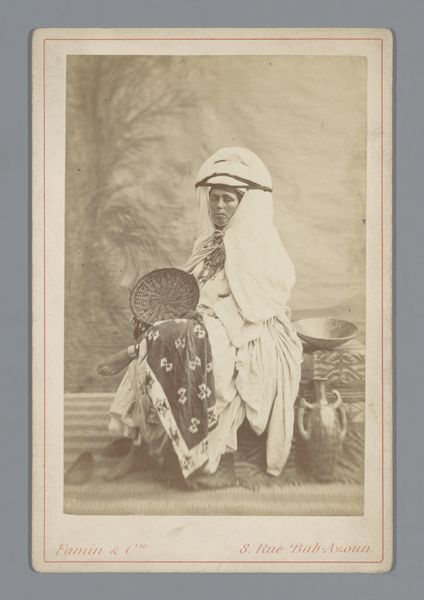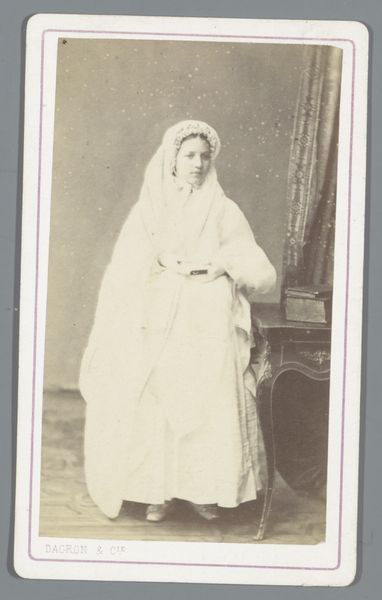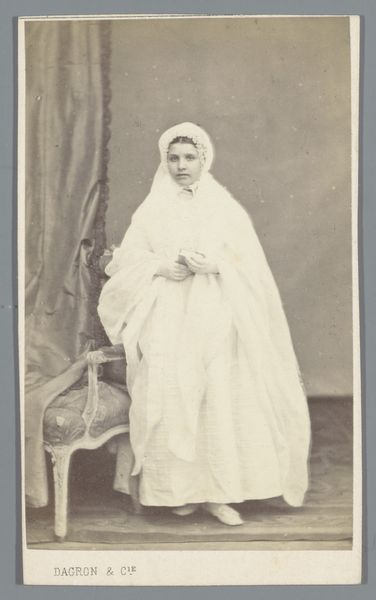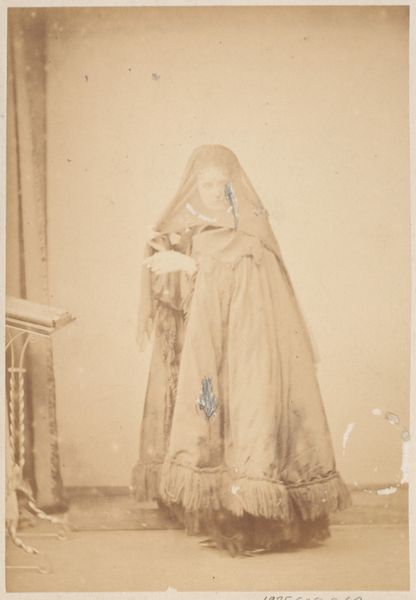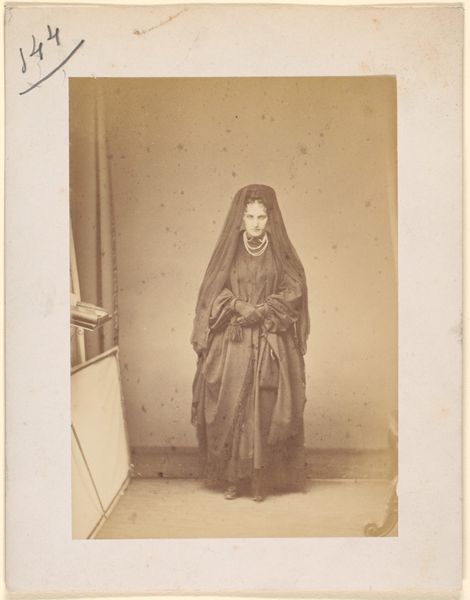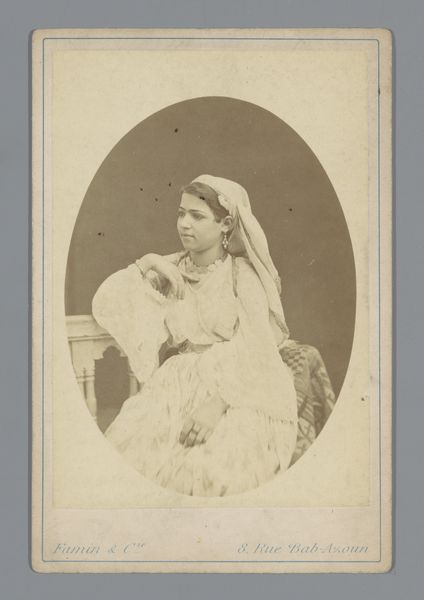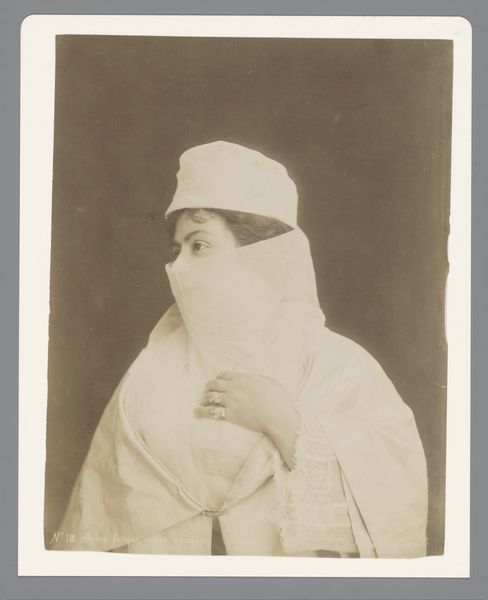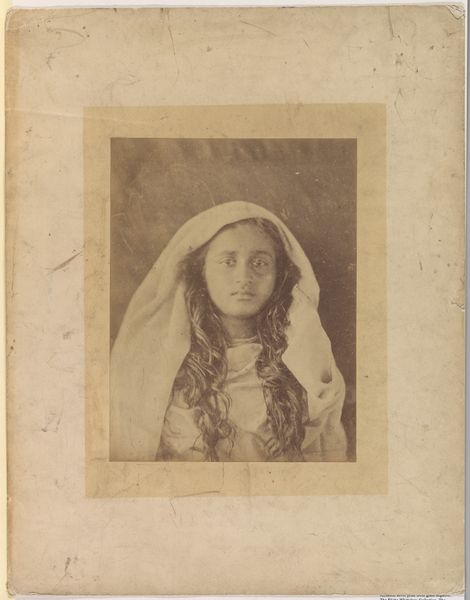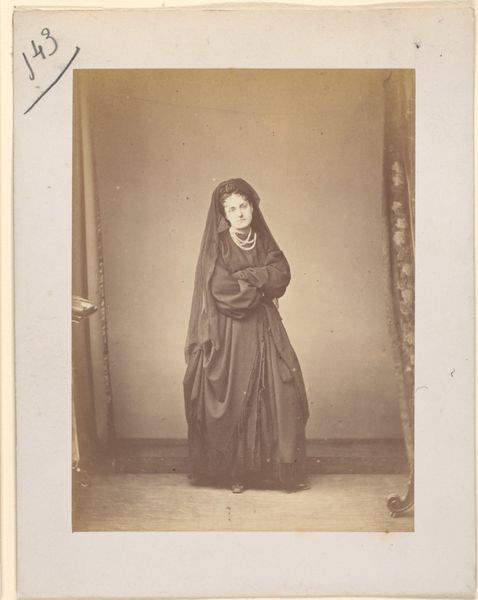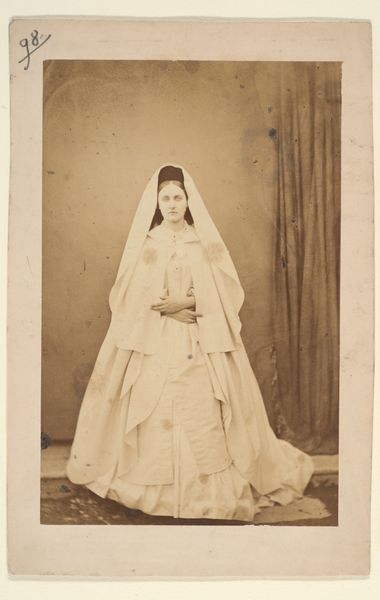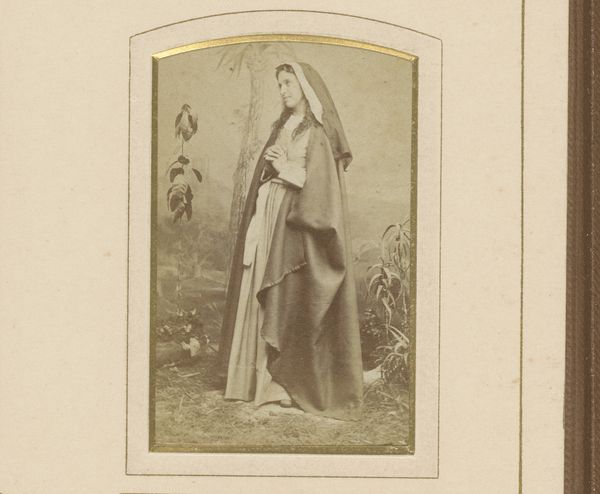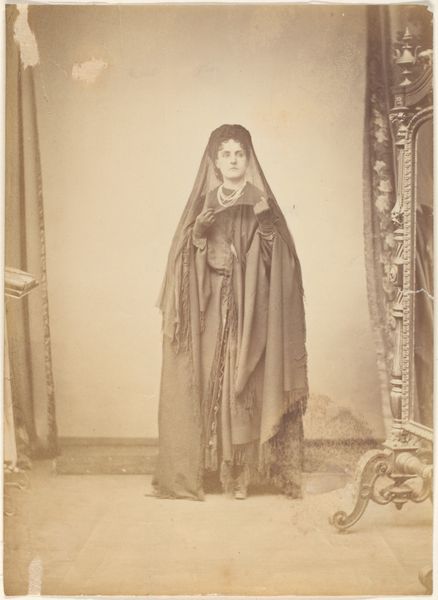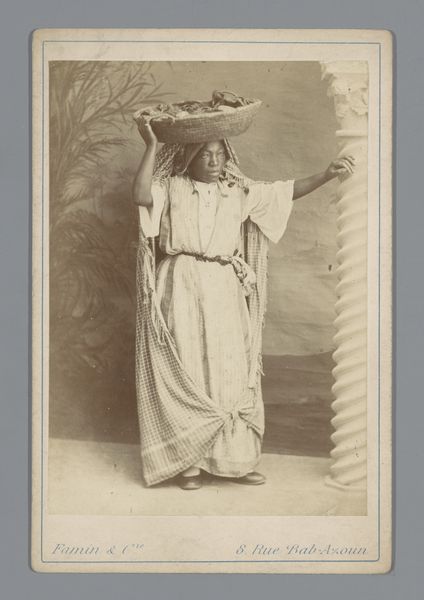
photography
#
portrait
#
photography
#
orientalism
Dimensions: height 164 mm, width 108 mm
Copyright: Rijks Museum: Open Domain
Curator: This is "Algerijnse vrouw in harembroek en sluier," a photograph produced between 1863 and 1889 by Famin et Cie. Editor: My first impression is that this is very staged. The sepia tones give it an antique feeling, but the subject's posture, that backdrop... It all feels so deliberately constructed. Curator: Exactly. It exemplifies Orientalism, a 19th-century Western fascination with a romanticized and often inaccurate depiction of the "exotic" East. The woman, likely posed in a studio, embodies Western fantasies about Algerian women. Her clothing is less about genuine cultural representation and more about visual spectacle. Editor: It's the weapon that gives me pause. It introduces an element of supposed danger or power to this otherwise passive image. Does that symbolize a veiled threat or just an embellishment to an exotic stereotype? Curator: Perhaps both. In many Orientalist images, weapons acted as props signifying masculinity and dominance, yet when juxtaposed with a woman, it can serve to create a hyper-sexualized figure or highlight supposed differences between Western women and those in the East. Editor: The veil obscures her face, rendering her anonymous, a symbol rather than an individual. I am struck by its emotional weight, the concealment implying both mystery and restriction. There’s a psychological dimension to the image of a veiled woman—a continuous unveiling, or perhaps the suppression, of identity. Curator: It invites us to critically examine our own assumptions about representation, doesn't it? How are women from different cultural backgrounds presented in art, and who controls those narratives? The staged background, her carefully placed hands, the rifle… Everything is carefully calibrated to appeal to a Western audience and reaffirm specific preconceived notions. Editor: These photographic tableaus offer a peek into the Western imagination of the time— revealing as much about those who produced the image as it does about its purported subject. Curator: Agreed. Understanding the historical and political context reveals the deeper, often problematic layers embedded within seemingly simple portraits like this one.
Comments
No comments
Be the first to comment and join the conversation on the ultimate creative platform.
